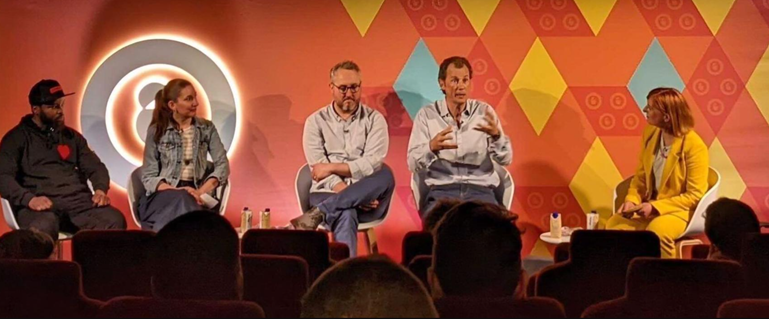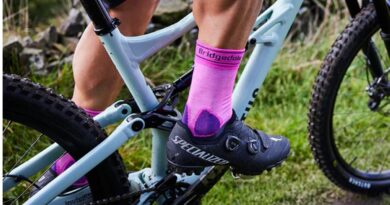How do you sell bikes to people who aren’t cyclists?
Are you a bicycle brand looking to engage with the 60 million people in the UK who don’t currently ride, or own, a bike, much less call themselves ‘cyclists’?
Cycling Industry News asked an award winning marketing professional for her take on creating brand growth, developing new paths to purchase for people who don’t yet cycle, and certainly don’t consider themselves cyclists if they do….
 Allow me to introduce myself: I’m Jo Rigby – your bike brand’s potential new customer – someone looking to reduce the £1,000 I pay each year on travel.
Allow me to introduce myself: I’m Jo Rigby – your bike brand’s potential new customer – someone looking to reduce the £1,000 I pay each year on travel.
I’m also a marketing professional, working as Head of Agency and Media Partnerships at Zappi, the leading consumer insights platform. We provide companies with digital data to build things people love — whether that be brands, ads, or innovative new products.
With the cost-of-living crisis encouraging people to seek out cheaper ways of getting from A to B, my question to you is, “Have you reviewed your marketing strategy to fully explore this opportunity?”
‘Give me an example of your work’, I hear you say.
We were an integral part of the creative development of the recent #BikeIsBest campaign, working with Fusion Media to deliver a message that measurably engaged a clearly defined target audience.
Who is this new audience and what do they look like?
They don’t look like your current target audience. They are not cyclists. They possibly haven’t owned a bike since they were at primary school. Purchasing a bike is something that they may only have done for their children.
If consumers find a new category confusing or complicated, they respond by delaying the purchase. I want to help you as brand owners make this consumer journey much simpler, to drive sales and grow your business.
I’m going to start by sharing my path to purchase, as someone who is currently delaying making a bike purchase.
Understanding the needs of this new audience.
To date, I’ve owned three bikes in my life. On my fourth Christmas Santa Claus left me a green Budgie bike aged four, on my tenth birthday my parents upgraded this to a golden Dawes folding bike, and when I was elected as a Labour councillor, they gifted me a baby blue Bobbin bike. I’m now in the market for a new bike as I’ve progressed to cycling seven miles to work and would like something a little lighter. I will make this next purchase based entirely on how the bike will work with my personal style. I have a gorgeous yellow suit and I’m considering a yellow Bobbin to create the wow effect. Then again, a red bike would also work with my mint green suit. If only I could have one in every colour!
Avoid forcing this new audience into your existing marketing personas.
The priorities I outlined above aren’t just mine. There is an untapped market of millions of people who will choose a bike in the same way they make decisions about which sofa to buy – will it fit into my personal brand? These are people who will never identify as a cyclist, not within the current framing of what a cyclist is. If we achieve a future state of returning to cycling as a mass form of transport, then not many people will consider themselves as cyclists. We will be people who sometimes use a bike to make some journeys, like going to the shops, visiting a friend across town, and maybe the commute. Some may go further and add on a ride round the country roads or further afield. But we won’t be cyclists, in the same way that my nana’s generation weren’t called cyclists, they just used a bike to move around their society.
‘Cyclist’, as a contemporary term, and often used in a negative way, emerged as the number of people using a bike plummeted. The small percentage of the UK who continue to use a bike are labelled as cyclists to signal that they are in a minority, and we’re all aware of the many tropes that accompany ‘cyclist’. A consequence of this othering is that it creates hesitation about trying cycling out, it’s something that other people do.
On Twitter I’ve developed friendships with other women who don’t consider themselves cyclists but use a bike to get around. It’s through reading their posts that I decided to try out an experiment in how I dress when I cycle to work. I switched my Sweaty Betty leggings for my aforementioned yellow and green suits. I also added in dresses and skirts. The clothes I was carting around in panniers to change into at work have become the outfits I wear to cycle in. I tend to plod along the road at top speeds of 13 mph and my sweat levels don’t warrant changing clothes. This experiment has transformed my experience of cycling. I notice that drivers are less aggressive, more likely to slow as I cycle towards them coming the other way. I’ve even had nice chats with London Taxi drivers at the traffic lights.
I’m by no means suggesting that people shouldn’t wear cycling gear. Wear whatever you want to feel safe and comfortable. I’m observing that this experiment of dressing ‘normally’ has pushed me even further away from identifying as a cyclist. I’m looking ahead to a time when, like Amsterdam and Copenhagen, we become just people in all sorts of clothes using a bike to get to all kinds of places.
We’re a long way from that reality. We have millions of people to convince that they too can use a bike.
Social media isn’t a digital billboard with one way ‘broadcast’ traffic – conversations have power
The women in the cycling community on Twitter are aware of the influence they assert when they are seen on the road. We can often be the only female in a group of cyclists at the lights on the commute into central London. We are conscious that just by being present on the road, we are doing more than pedalling, we are showing that people like us can use a bike. I admire these women so much, women like @Auntiekay28, @cyclinginaskirt and @carlafrancome, who are showing up with their bikes with a goal to change society.
We can often feel like a small group of evangelists. And we take a hammering online from those who get angry at cyclists, people who have stopped seeing us as just women on bikes, celebrating the freedom it is giving us.
Time for seismic change in how bikes are advertised
For us to get closer to an era when cycling is no longer different, we need the cycling industry to adapt. In many ways, the cycling industry is where the car industry was several decades ago. Cars were marketed to men as vehicles of power, status and ultimate masculinity. A purchase that will make you faster, more successful, increase your prowess. I worked in advertising in that era. Working on the car account was every male account executive’s dream. There was no higher calling than playing around with a limited lexigraphy to assemble new strap lines about how much hotter you’d be if you drove this car. It took several decades for the industry to take notice of data that women were involved in the car buying decision, for goodness sake, women were actually buying their own cars. Suddenly, the car industry had to change fast, and in the early days, in quite clumsy ways, to market to women. Think Paula Hamilton in that VW Golf ad.
Create aspirational lifestyle advertising
Bike advertising has mirrored that of classic early car advertising. The vehicle is shown sitting majestically against a backdrop of mountains or backlit in a city environment devoid of other traffic or signs of human life. Information about how the car had been built or what kind of engine it had would always be added to the copy. Car advertising now seeks to imbue a lifestyle – the dad having good dad time with his daughter as he drives her to school, the happy memories created when the family spent quality time together on that scenic, traffic-free drive to the South of France. These ads speak to the millions of people who do not care what is under the bonnet, in the same way I’ve no interest in bike gears, they are buying something that amplifies their own personal brand. The choice of colour is just as important too – what am I going to look like in this car?
How Zappi helped to connect the idea of cycling to people who don’t cycle
It’s time for the cycling industry to move on too in the way it advertises bikes. If the goal is to sell more bikes, then we need to consider more than one audience.
Right now, the majority of bike advertising is aimed at cyclists.
#BikeIsBest recently launched a terrific campaign aimed at people who were not cyclists. It featured some of the women I mentioned earlier. It showed them just moving around on a bike, mainly in everyday clothes. Fusion Media, who created the advert, worked with Zappi, to help craft a strap line that would appeal to those who aren’t cyclists. Three different strap lines were tested against an audience of non-cyclists. The data helped Fusion Media to further develop the line that had resonated most with this audience. ‘If we can, you can’ featured in the final campaign, a beautiful call to action for the nation.
Shifting to marketing bikes that appeal to a wider set of lifestyles will bring in new consumers. Our entry level bike might always be the same, just in different colours. We might never buy that 21 -speed bike. But we bring volume – there are millions of us waiting to be told that we need a bike if we want to enjoy our lives to the fullest, it worked so well for the car industry.
“My dream for the bike industry is that the bike account is the thing that lures the advertising talent to move agency.”
“That one day, the Cannes Lion Grand Prix will be handed to an ecstatic team of creative agency types for their campaign that had millions of people rushing out to buy bikes they never knew they needed.”
Don’t just take my word for it, here’s cycling industry veteran Laurens van Rooijen talking about the announcement that cargo bikes will be sold in car dealerships in France: “Okay, that’s a biggie! Speaking of reaching out to the 80% of the population that is not cycling yet much rather than those 20% that are already aboard. Big move by DOUZE Cycles and Toyota France.”
So, if you’re a bike brand, or a distributor, wondering how you reach “the 80% of the population that is not cycling yet”, consider me as your target customer:
The only brand I see that speaks to me right now is Bobbin Bikes. In the same way that my dad spent ten years visiting the Mercedes website and mithering the sales reps, I often visit the Bobbin Instagram feed to ponder if yellow really is my colour.
Want to win my business, to lure me (and millions like me) away from the tube or car, or even a Bobbin bike, and win a global award for doing so?
Let’s start the golden era of making brilliant bike campaigns aimed at people who don’t cycle!
Image credits: Zappi.io
@oscar.eckel



